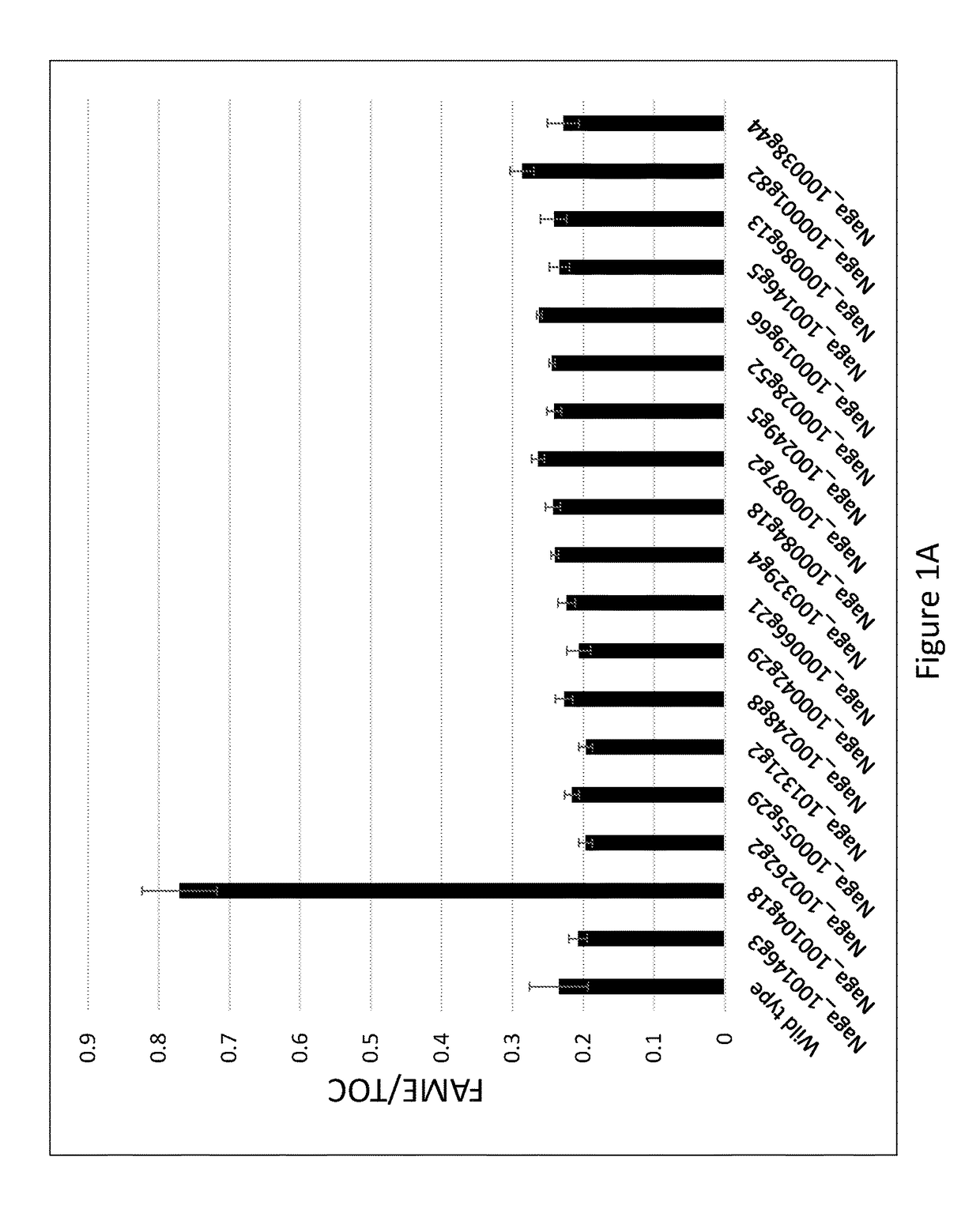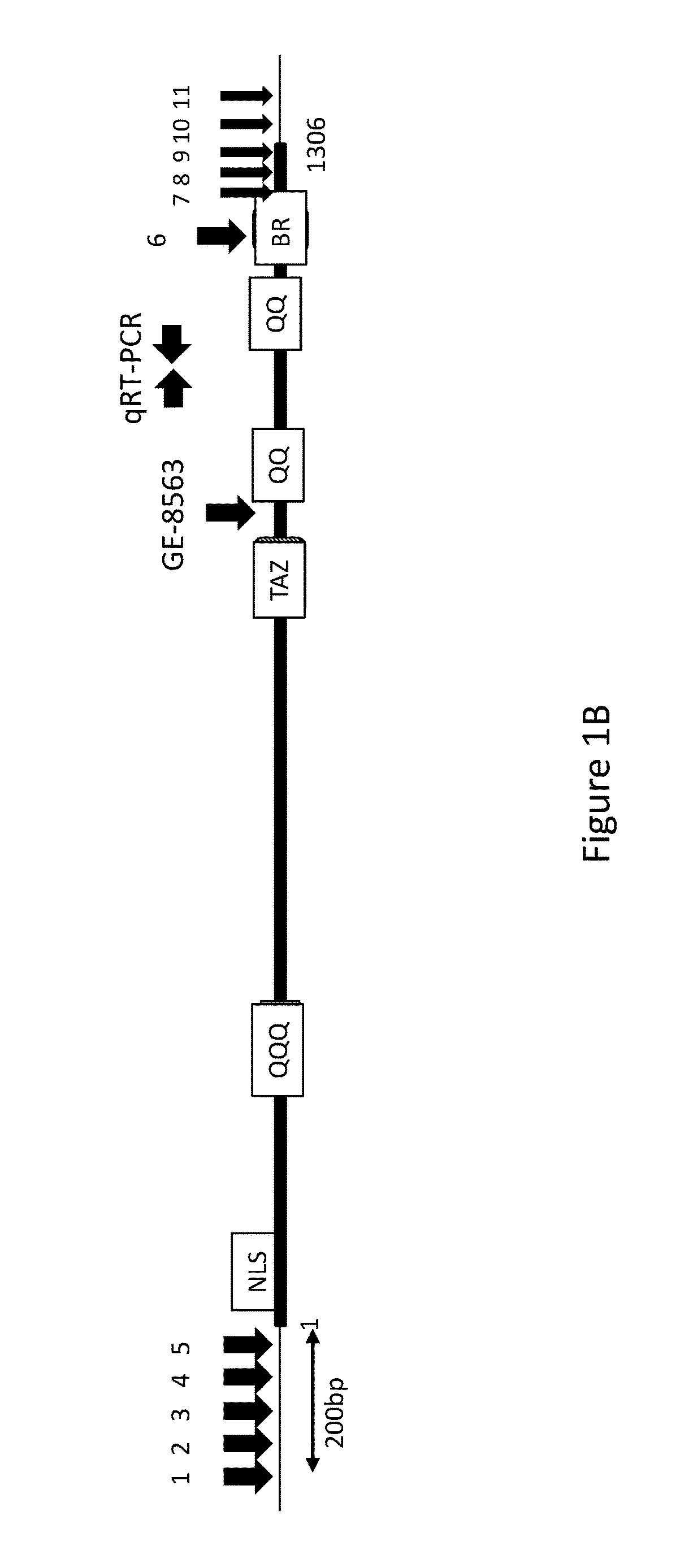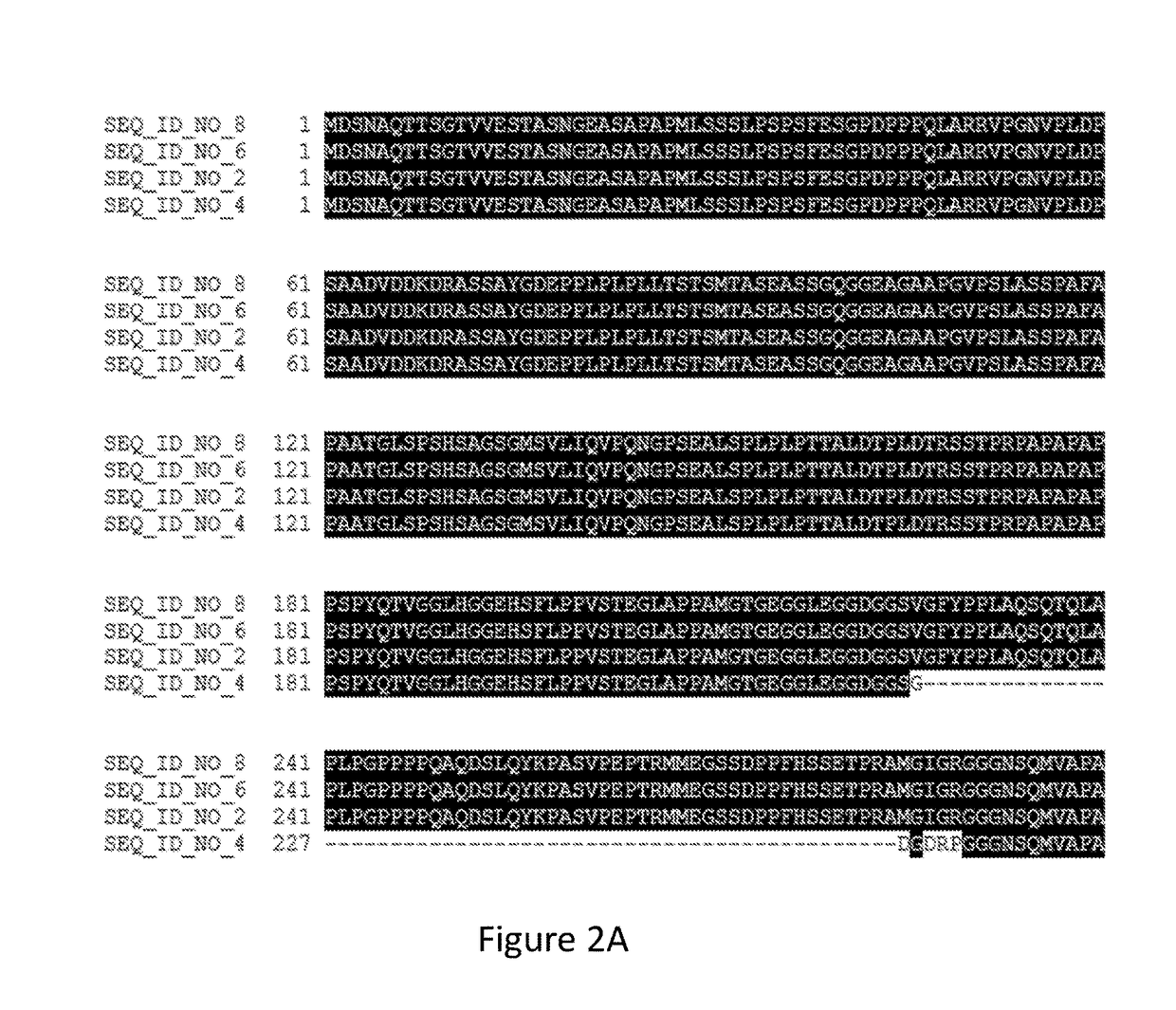Algal mutants with increased lipid productivity
a technology of lipid productivity and mutants, applied in the field of mutant microorganisms, can solve the problems of limited lipid biosynthesis, no biochemical data showed that laminarin content was affected, and no productivities were reported. achieve the effect of more lipid
- Summary
- Abstract
- Description
- Claims
- Application Information
AI Technical Summary
Benefits of technology
Problems solved by technology
Method used
Image
Examples
example 1
ation of a Polypeptide Downregulated During Nitrogen Starvation
[0228]To identify genes that influence lipid biosynthesis, a comparative transcriptomics experiment was performed in which the RNA transcript levels of genes of Nannochloropsis gaditana cells under nitrogen starvation, under which Nannochloropsis induces storage lipid biosynthesis, were compared with the levels of RNA transcripts of the same strain of Nannochloropsis gaditana grown under identical conditions except that the amount of nitrogen in the growth medium was not limiting.
[0229]Wild type N. gaditana (WT-3730) cells were grown in nutrient replete medium under a 16 hour light (120 μE) / 8 hour dark cycle to light limitation and at the beginning of the photoperiod were spun down and resuspended in either nitrogen replete medium PM074 or culture medium lacking a nitrogen source (“nitrogen deplete” medium PM067). RNA was isolated from each sample three hours after resuspension in nitrogen replete or nitrogen depete medi...
example 2
atic Analysis of the Bromo-1091 Protein: Domains and Orthologs
[0233]In addition to the transcript encoding SEQ ID NO:2, three additional transcripts were identified by RNA Seq and 3′ RACE (rapid amplification of cDNA ends; Frohman, et al. (1988). Proc. of the Natl Acad Sci. USA 85: 8998-9002) that originate from the Bromo-1091 gene and extensively overlap with SEQ ID NO:1. RACE was performed using the MARATHON® cDNA amplification kit (Clontech, Mountain / View, Calif.) to obtain cDNAs from RNA isolated using the NUCLEO TRAP® mRNA mini RNA isolation kit (Clontech). The nucleotide sequences of these transcripts are provided as SEQ ID NO:3, SEQ ID NO:5, and SEQ ID NO:7, encoding the polypeptides of SEQ ID NO:4, SEQ ID NO:6, and SEQ ID NO:8, respectively. An alignment of the sequences of the polypeptide variants encoded by the four cDNAs is provided as FIG. 2A-C. Each of the polypeptides encoded by transcripts of the Bromo-1091 gene includes the same “TAZ” zinc finger domain (PF002135), a...
example 4
1 Knockout Mutant in Batch Productivity Assay
[0244]To determine the effect of knocking out the Bromo-1091 gene on growth and lipid production, Bromo-1091 knockout strain GE-8563 and the wild type N. gaditana progenitor strain WT-3730 were grown in a batch productivity assay, in which cells were cultured for one week in 75 cm2 rectangular tissue culture flasks containing 175 ml of culture medium PM123 that included 15 mM nitrate as the sole nitrogen source, i.e., the culture medium the starter culture was diluted into for productivity assays had no source of reduced nitrogen. Three flasks each of WT-3730 and GE-8563 were inoculated to an initial OD730 of 0.5 from starter cultures. Starter cultures of Bromo knockout strain GE-8563 used PM124 medium, which included 5 mM ammonium in addition to approximately 8.8 mM nitrate. Wild type WT-3730 starter cultures used PM074 nitrate-only medium. Typical dilutions of starter culture into the assay culture medium were from 15-35 mls of starter ...
PUM
| Property | Measurement | Unit |
|---|---|---|
| Fraction | aaaaa | aaaaa |
| Fraction | aaaaa | aaaaa |
| Fraction | aaaaa | aaaaa |
Abstract
Description
Claims
Application Information
 Login to View More
Login to View More - R&D
- Intellectual Property
- Life Sciences
- Materials
- Tech Scout
- Unparalleled Data Quality
- Higher Quality Content
- 60% Fewer Hallucinations
Browse by: Latest US Patents, China's latest patents, Technical Efficacy Thesaurus, Application Domain, Technology Topic, Popular Technical Reports.
© 2025 PatSnap. All rights reserved.Legal|Privacy policy|Modern Slavery Act Transparency Statement|Sitemap|About US| Contact US: help@patsnap.com



